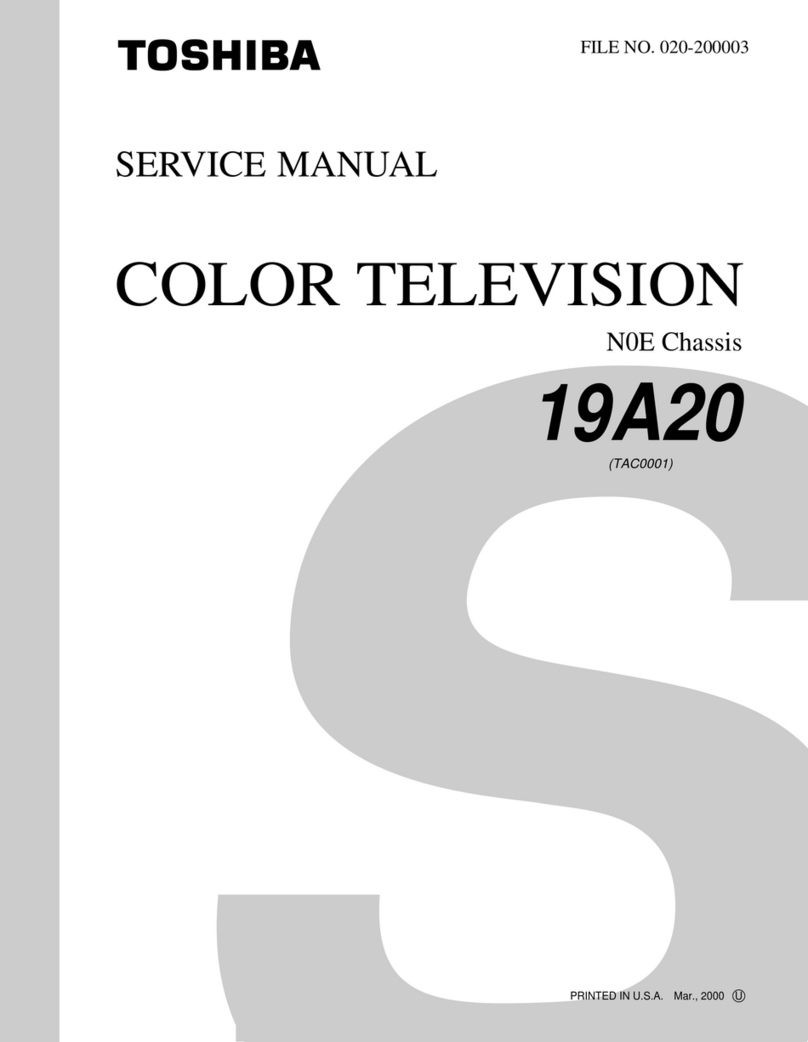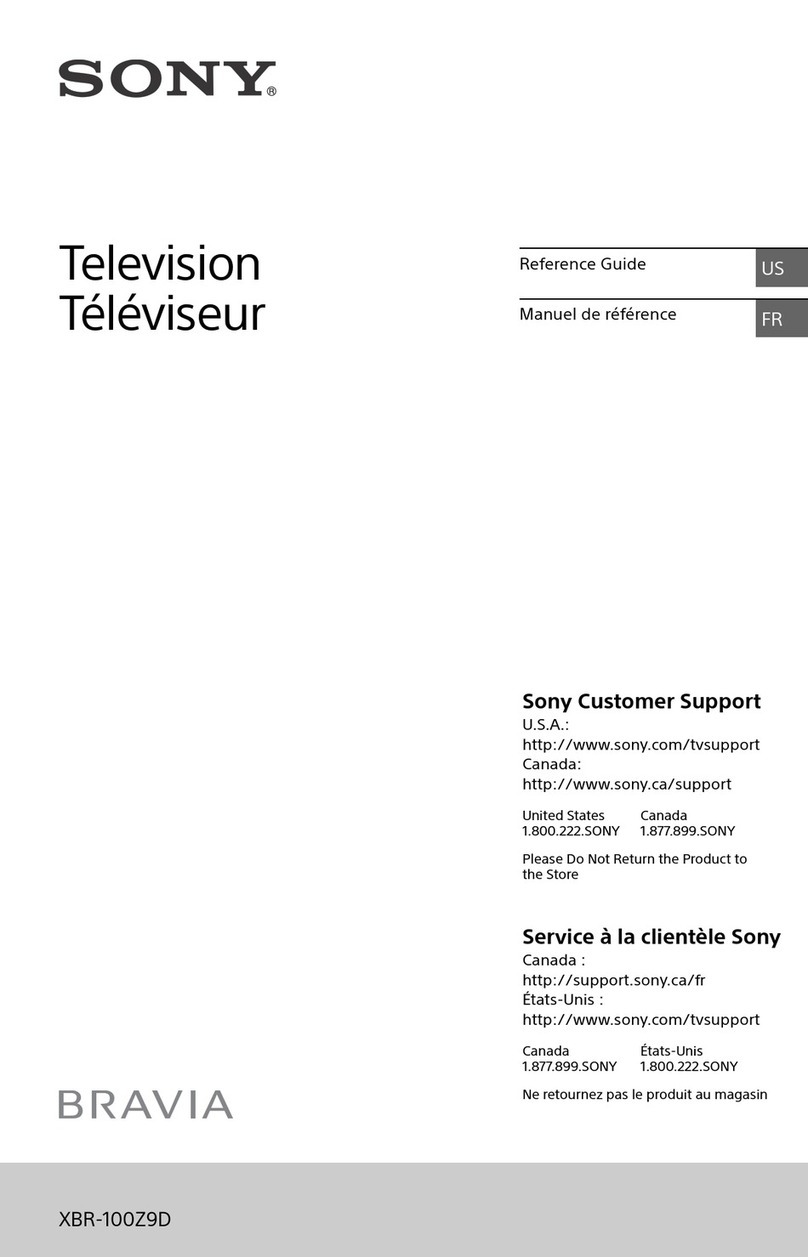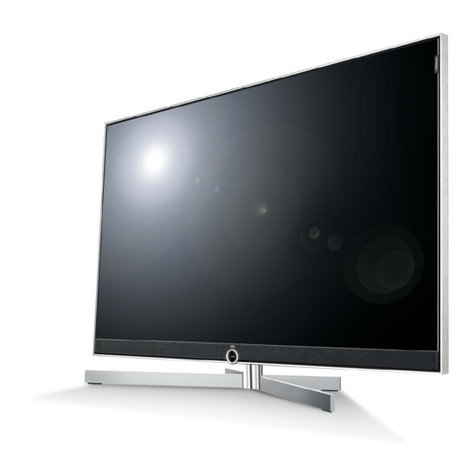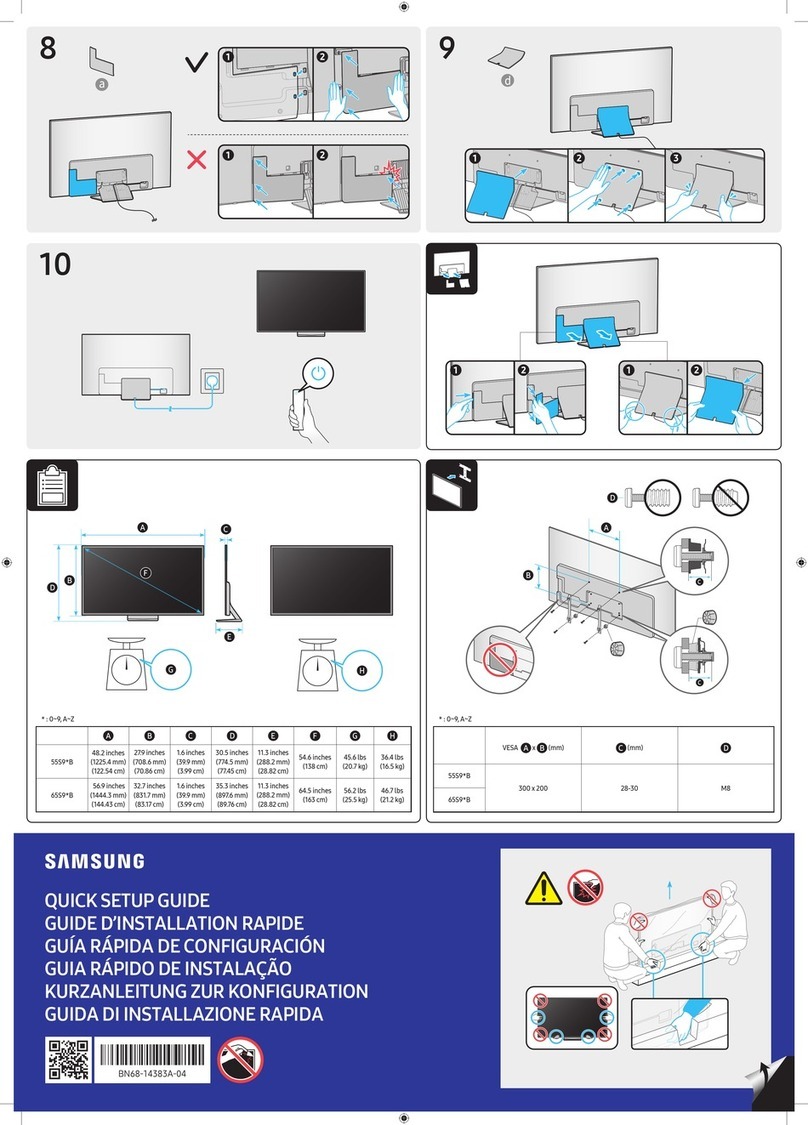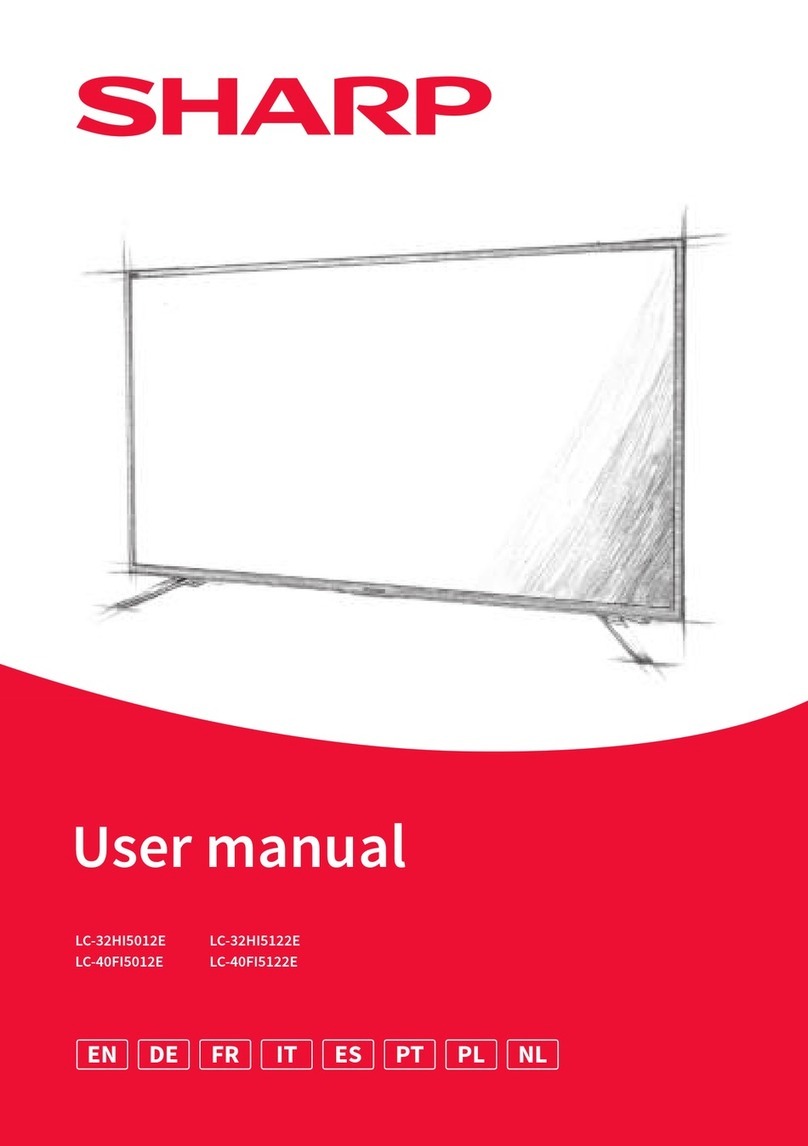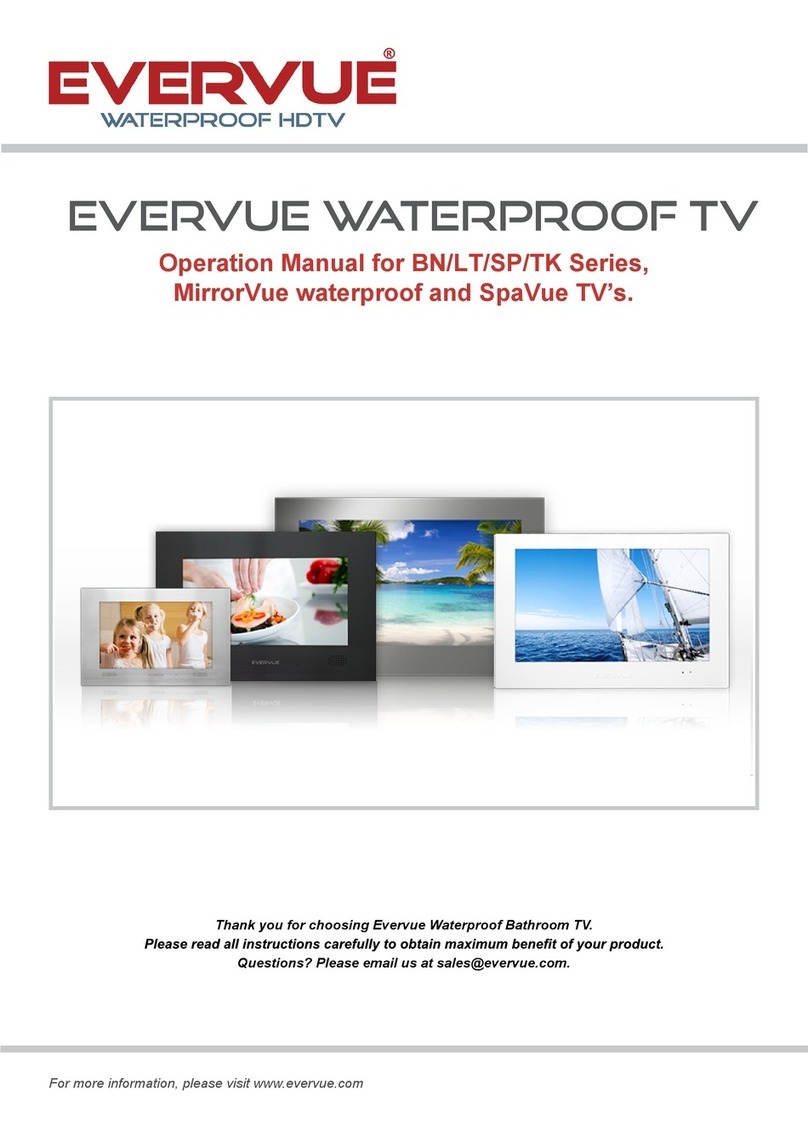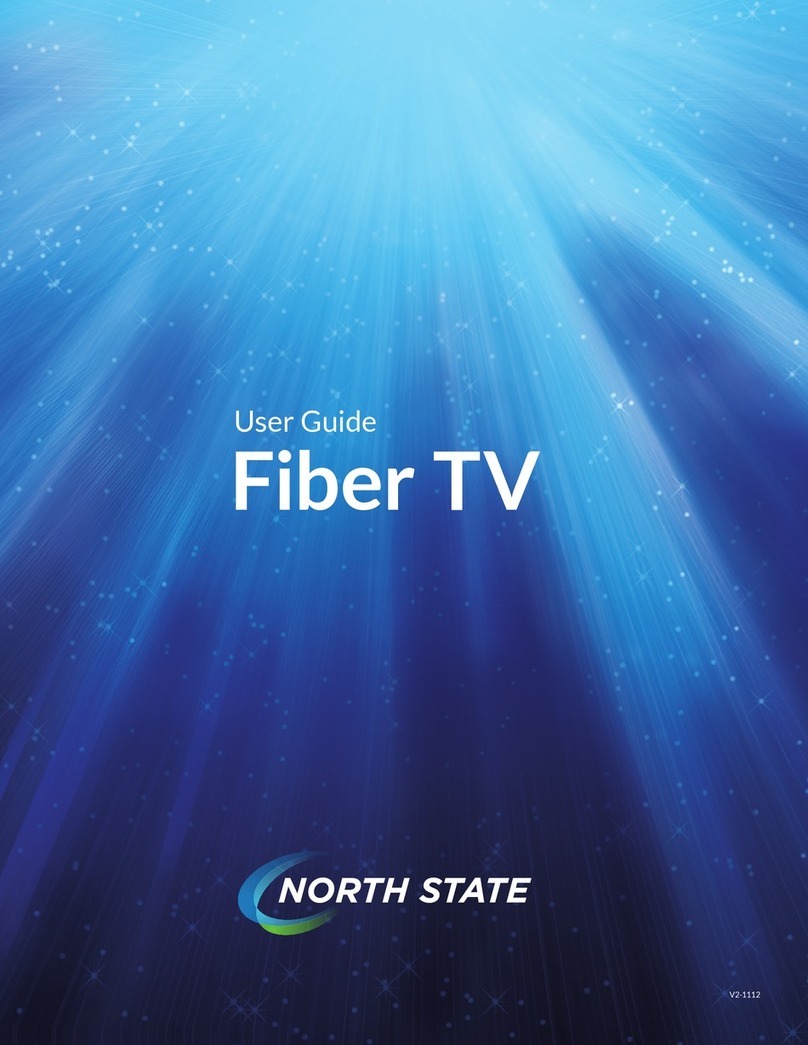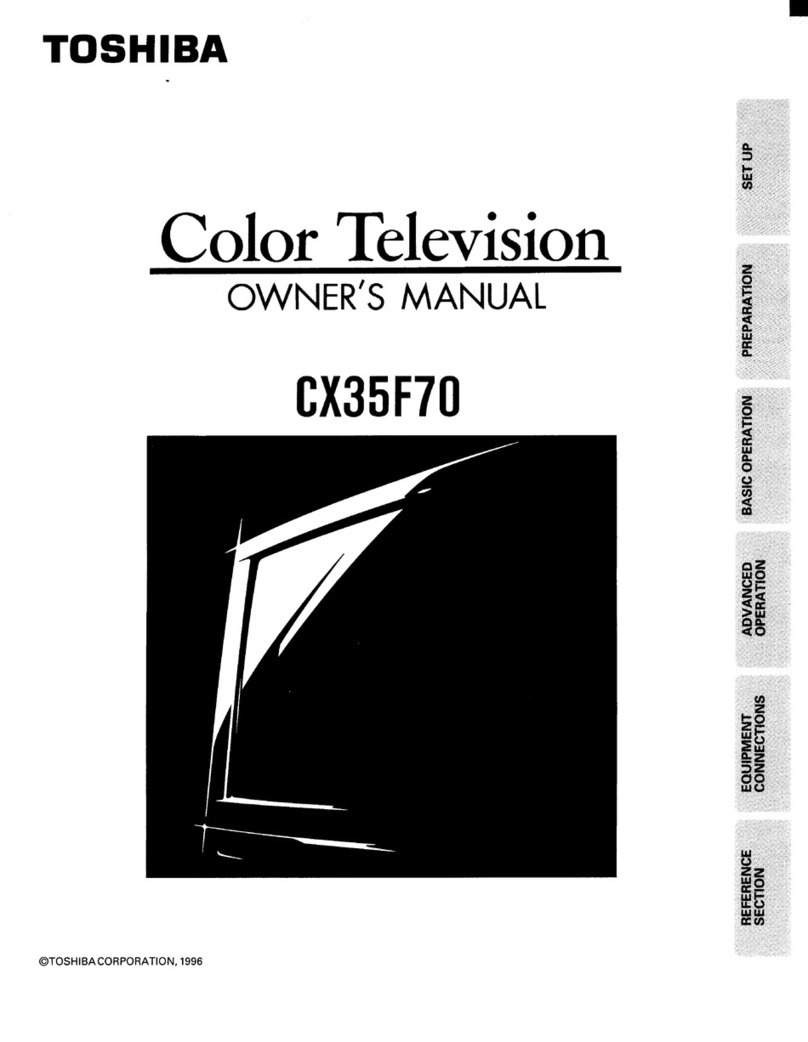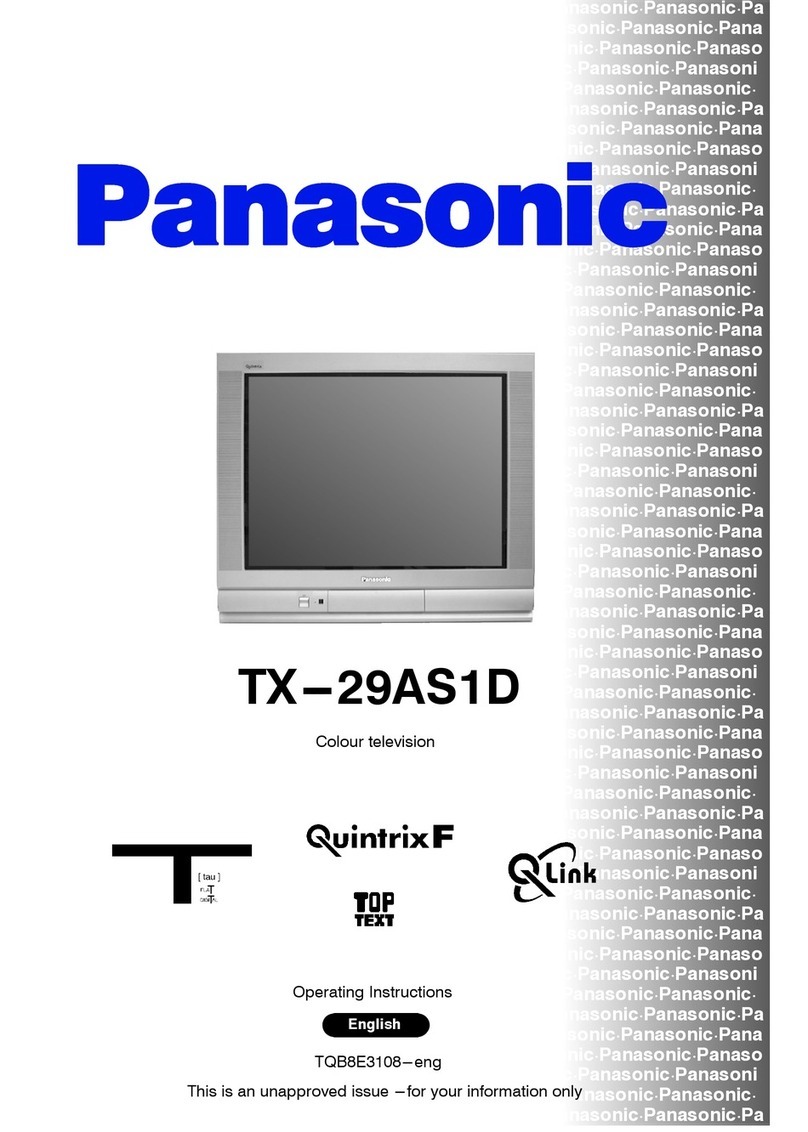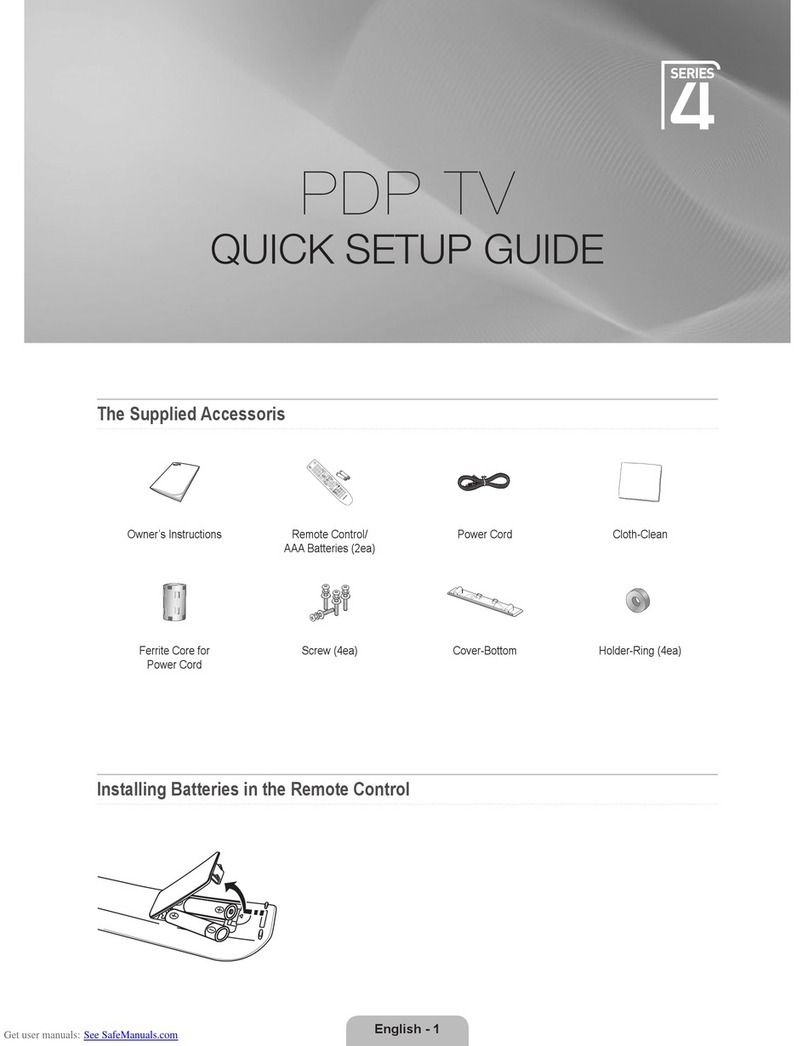ChyTV HD-150 User manual

Pub. No 2A02234, 1/28/08

Table of Contents
1INTRODUCTION..................................................................................................1
1.1 GETTING STARTED..............................................................................................1
1.2 CREATING CONTENT ..........................................................................................1
1.2.1 Section 6: ChyTV Overview......................................................................1
1.2.2 Section 7: ChyTV Author Quick Start Tutorial......................................1
1.2.3 Section 8: PowerPoint Quick Start Tutorial..........................................1
1.2.4 Section 9: Manually Creating a Page Using PowerPoint..................1
1.2.5 Section 10: ChyTV Elements Reference.................................................1
1.2.6 Section 11: ChyTV Tools Reference........................................................2
2CHYTV HARDWARE SETUP ..........................................................................3
2.1 INTRODUCTION....................................................................................................3
2.2 HARDWARE CONNECTION.................................................................................4
2.2.1 USB Version Connection Diagram..........................................................4
2.2.2 Ethernet Version Connection Diagram...................................................4
2.2.3 Connector Descriptions.............................................................................5
2.3 OPERATION..........................................................................................................6
2.3.1 Controls and Indicators.............................................................................6
3CHYTV PLUS HARDWARE SETUP..............................................................7
3.1 INTRODUCTION....................................................................................................7
3.2 HARDWARE CONNECTION.................................................................................8
3.2.1 Connection Diagram..................................................................................9
3.2.2 Connector Descriptions.............................................................................9
3.3 OPERATION........................................................................................................11
3.3.1 Controls and Indicators..........................................................................11
3.3.2 Selecting a Video Input...........................................................................12
4CHYTV HD 100 / HD 150 SETUP..................................................................13
4.1 INTRODUCTION..................................................................................................13
4.2 HARDWARE CONNECTION...............................................................................13
4.2.1 Power Supply Voltage Selector.............................................................13
4.2.2 Connection Diagram...............................................................................14
4.2.3 Connector Descriptions..........................................................................14
4.3 OPERATION........................................................................................................15
4.3.1 Turning On / Off.......................................................................................15
4.3.2 Setting the IP Address.............................................................................15
4.3.3 “Phoning Home”.....................................................................................16
4.3.4 Connecting with ChyTV Tools...............................................................16
4.4 AUTHORING CONTENT.....................................................................................17
4.4.1 ChyTV Tools.............................................................................................17

4.4.2 ChyTV Author...........................................................................................17
4.4.3 PowerPoint...............................................................................................18
5PC SOFTWARE INSTALLATION...............................................................19
5.1 PC REQUIREMENTS...........................................................................................19
5.2 CHYTVSOFTWARE OVERVIEW......................................................................19
5.3 INSTALLING CHYTVTOOLS............................................................................19
5.4 CONFIGURINGTHE IP ADDRESS OF A CHYTVUNIT....................................21
5.4.1 Overview....................................................................................................21
5.4.2 IP Address Configuration.......................................................................21
5.5 ADDITIONAL IP.TXT ENTRIES........................................................................24
5.5.1 Display Information................................................................................24
5.5.2 Name and Password................................................................................24
5.5.3 FTP Off......................................................................................................24
5.5.4 Network Priority......................................................................................24
5.6 INSTALLINGTHE USB DRIVER.......................................................................25
5.6.1 USB Installation Tips..............................................................................26
5.7 MANUALLY INSTALLING CHYTV ELEMENTS...............................................27
5.7.1 Adding the Elements Add-In to PowerPoint.......................................27
5.8 INSTALLING CHYTVAUTHOR........................................................................28
6CHYTV OVERVIEW.........................................................................................31
6.1 HOW CHYTVWORKS......................................................................................31
6.2 HOW PAGES ARE CREATED.............................................................................31
6.2.1 Page Elements..........................................................................................31
6.2.2 Pages..........................................................................................................32
6.3 HOW PAGES ARE PROGRAMMED FOR DISPLAY............................................32
6.4 HOW PROJECTS ARE ORGANIZED AND STORED...........................................32
6.4.1 CF Folder..................................................................................................33
6.4.2 HTML Folder............................................................................................33
6.4.3 Images Folder...........................................................................................33
6.4.4 Thumbnail Folder....................................................................................33
6.5 CREATING AND DISPLAYING PAGES ON CHYTV.........................................34
6.5.1 Page Elements..........................................................................................34
6.6 STORING AND REFERENCING DATA...............................................................35
6.6.1 Embedding................................................................................................35
6.6.2 File Referencing.......................................................................................35
6.6.3 Active Data................................................................................................36
7CHYTV AUTHOR QUICK START TUTORIAL.....................................37
7.1 OPENING AND TRANSFERRING A PROJECT TO THE CHYTVUNIT..............37
7.2 CREATING AND SAVING A NEW PAGE...........................................................38
7.3 ADDING A BACKGROUND IMAGE TO THE NEW PAGE..................................39
7.4 ADDING A CRAWLTOTHE PAGE ....................................................................41
7.5 ADDING VIDEO TO THE PAGE..........................................................................44
7.6 SAVING AND TESTING YOUR PAGE................................................................46
7.7 ADDING ACTIVE DATA TO YOUR PROJECT...................................................46
7.8 USING ACTIVE DATA IN TAGS........................................................................49

7.9 ADDING PAGES TO THE SCHEDULE................................................................54
7.10 TIPS FOR USING CHYTVTOOLS......................................................................55
8POWERPOINT QUICK START TUTORIAL...........................................56
8.1 OPENING AND TRANSFERRING A PROJECT TO THE CHYTVUNIT..............56
8.2 CREATING AND SAVING A NEW PAGE ...........................................................57
8.3 ADDING ACTIVE DATA TO THE PAGE............................................................61
8.4 ADDING CRAWL DATA TO PAGES..................................................................66
8.5 ADDING ARTISTIC ELEMENTSTO PAGES. .....................................................68
8.6 ADDING PAGES TO THE SCHEDULE................................................................72
8.7 TIPS FOR TWEAKING YOUR PAGE ..................................................................72
9MANUALLY CREATING A PAGE USING POWERPOINT...............73
9.1 POWERPOINT OBJECTS.....................................................................................73
9.1.1 Slides..........................................................................................................73
9.1.2 Backgrounds.............................................................................................73
9.1.3 Picture Boxes............................................................................................73
9.1.4 Text Boxes.................................................................................................73
9.2 THE POWERPOINT USER INTERFACE.............................................................74
9.2.1 The Menu...................................................................................................74
9.2.2 The Toolbar...............................................................................................76
9.2.3 The Slide List............................................................................................76
9.2.4 The Slide Layout Area.............................................................................76
9.2.5 The Notes Area.........................................................................................76
9.2.6 Context Sensitive Menus.........................................................................76
9.3 ADDING POWERPOINT OBJECTS TO A SLIDE................................................76
9.3.1 Creating a New Presentation.................................................................76
9.3.2 Setting the Background Color...............................................................76
9.3.3 Setting the Background Image...............................................................77
9.3.4 Placing an Image.....................................................................................77
9.3.5 Moving and Resizing an Image.............................................................78
9.3.6 Adding Text to a Page.............................................................................78
9.3.7 Formatting the Text Font, Font Style, Size or Color.........................78
9.3.8 Adding Shadow and Underline Effects to Text...................................79
9.3.9 Adding a Border or Fill to the Text Box..............................................79
9.3.10 Moving and Resizing the Text Box........................................................79
9.4 ADDING TAGS TO A SLIDE...............................................................................80
9.4.1 How the Image Engine Displays Tags.................................................80
9.4.2 Rules for Using Tags...............................................................................81
9.4.3 Adding a Tag in PowerPoint..................................................................81
9.4.4 Creating a 4x3 Fixed Aspect Ratio Video Tag....................................82
9.5 SAVING THE PRESENTATION AS HTML........................................................82
9.6 PLACING TEXT AND GRAPHICS OVER FULL SCREEN VIDEO......................82
9.6.1 Keying Defined.........................................................................................82
9.6.2 Keying in ChyTV......................................................................................83
10 CHYTV ELEMENTS REFERENCE.............................................................84
10.1 POWERPOINT CONFIGURATION......................................................................84

10.2 BASIC OPERATION............................................................................................84
10.3 CREATE NEW PAGE..........................................................................................84
10.4 SET BACKGROUND............................................................................................85
10.5 VIDEO WINDOW................................................................................................85
10.6 GRAPHICS...........................................................................................................85
10.7 CRAWL................................................................................................................85
10.7.1 Crawl Parameters....................................................................................85
10.7.2 Crawl Data Source..................................................................................86
10.8 AUDIO.................................................................................................................86
10.9 TEXT EFFECT .....................................................................................................87
10.10 CLOCK.............................................................................................................87
10.11 ACTIVE DATA................................................................................................88
10.12 LOGO...............................................................................................................88
10.12.1 Logo File Name ....................................................................................89
10.12.2 Active Data............................................................................................89
10.13 FLIPBOOK.......................................................................................................89
10.13.1 FlipBook File Name.............................................................................89
10.13.2 Active Data............................................................................................90
10.14 CHYTVPLUS (FOR CHYTVPLUS UNITS ONLY)......................................90
10.14.1 RS-232....................................................................................................90
10.14.2 GPIO.......................................................................................................92
10.15 SAVE AS CHYTV...........................................................................................93
11 CHYTV TOOLS REFERENCE......................................................................94
11.1 PROJECT SELECTOR..........................................................................................94
11.2 MENU BAR.........................................................................................................94
11.2.1 File..............................................................................................................94
11.2.2 View............................................................................................................95
11.2.3 Control.......................................................................................................95
11.2.4 Options.......................................................................................................95
11.2.5 Help............................................................................................................98
11.3 PROJECT TOOL BAR..........................................................................................98
11.3.1 Project Button...........................................................................................98
11.3.2 Data Selector Buttons.............................................................................99
11.3.3 Preview Button.........................................................................................99
11.4 PROJECT DATA WINDOW...............................................................................100
11.4.1 Pages........................................................................................................100
11.4.2 Data..........................................................................................................101
11.4.3 Text...........................................................................................................102
11.4.4 Audio........................................................................................................102
11.4.5 Logos........................................................................................................103
11.4.6 Flip Books...............................................................................................103
11.5 PROJECT SCHEDULE WINDOW ......................................................................103
11.5.1 Adding ChyTV Pages to the Schedule................................................104
11.5.2 Adding a Page Tag to the Schedule....................................................104
11.5.3 Changing the Order of Pages in the Schedule..................................104
11.5.4 Project Schedule Command Buttons..................................................104
11.6 DEVICE SELECTOR..........................................................................................107

11.7 CHYTVTOOLBAR CONTROLS......................................................................107
11.7.1 Update All...............................................................................................107
11.7.2 Display Controls....................................................................................107
11.7.3 Drive.........................................................................................................108
11.8 CHYTVDATA WINDOW ................................................................................108
11.8.1 Pages........................................................................................................108
11.8.2 Data..........................................................................................................108
11.8.3 Text...........................................................................................................109
11.8.4 Audio........................................................................................................109
11.8.5 Logos........................................................................................................110
11.8.6 Flip Books...............................................................................................110
11.9 CHYTVSCHEDULEWINDOW........................................................................110
11.9.1 ChyTV Schedule Command Buttons...................................................110
12 TAG REFERENCE...........................................................................................112
12.1 SUPPORTED TAGS ...........................................................................................112
13 APPENDIX..........................................................................................................122
13.1 WARNINGS AND DISCLAIMERS.....................................................................122
13.2 TROUBLESHOOTING........................................................................................124
13.3 CHYTVPLUS RACK MOUNT INSTALLATION..............................................125
13.3.1 Single Unit Rack Mount Installation..................................................125
13.3.2 Double Unit Rack Mount Installation................................................125
13.4 CHYTVHARDWARE SPECIFICATIONS.........................................................127
13.5 CHYTVPLUS HARDWARE SPECIFICATIONS...............................................129
13.6 CHYTVPLUS GPIO INTERFACE...................................................................131
13.6.1 ChyTV Plus GPIO Pinout Diagram...................................................131
13.7 CHYTVPLUS RS232 INTERFACE.................................................................132
13.7.1 ChyTV Plus RS232 Pinout Diagram..................................................133
13.8 CHYTVPROGRAMMERS GUIDE....................................................................134
13.8.1 ChyTV Programming Overview..........................................................134
13.8.2 ChyTV Commands.................................................................................134
13.9 INTERNATIONAL APPENDIX...........................................................................143
13.9.1 Changing the Text Used for the Clock Day of Week and Month...143
13.10 WARRANTY..................................................................................................145

1 INTRODUCTION
1
1Introduction
Welcome to ChyTV™, the next generation in digital signage! This Hardware/Software Setup
Guide illustrates the three main phases of ChyTV setup. When setup is complete, ChyTV is ready
to display your custom-createdpages.
With ChyTV, you're up and running in a flash. CompactFlash®, that is. Your ChyTV comes from
thefactorypre-loaded with a variety of demonstration pages. Once the ChyTV is connected to the
incoming video source and the display TV/monitor, the looping demo can then guide you through
a variety of ChyTV samples and features.
1.1 Getting Started
There are three main setup procedures that must be performed to run ChyTV:
Hardware Connections– Explained in Section 2 (ChyTV), Section 3 (ChyTV Plus) and Section
4 (HD 100 / HD 150).
Software Installation–Explained in Section 5.
ProjectSetup –Explained in Section 6.
1.2 Creating Content
This user guide contains alot of information about creating content for your ChyTV. The
following sections provide tutorials and reference information about using CyhTV Tools,ChyTV
Elements and Microsoft PowerPoint to create pages for display on ChyTV units:
1.2.1 Section 6: ChyTV Overview
This section describes how the ChyTV unit displays pages, how pages are created and organized,
and the various elements that are used in ChyTV pages. Recommended to provide a basic
understanding of the whole process.
1.2.2 Section 7: ChyTV Author Quick Start Tutorial
For those who want to jump right in, the Quick Start Tutorial is a step-by-step guide that takes you
from creating a project through creating a page in ChyTV Author, then scheduling the page for
display on the ChyTV unit.
1.2.3 Section 8: PowerPoint Quick Start Tutorial
The PowerPoint Quick Start Tutorial is a step-by-step guide that takes you from creating a project
through creating a page using Microsoft PowerPoint and ChyTV Tools, then scheduling the page
for display on the ChyTV unit.
1.2.4 Section 9: Manually Creating a Page Using PowerPoint
This section describes, in depth, the procedures used to create pages in the Quick Start Tutorial.
Recommended for a deeper understanding of how data and tags are used in PowerPoint.
1.2.5 Section 10: ChyTV Elements Reference
The ChyTV Elements Reference describes in detail all of the buttons in the ChyTV Elements
PowerPoint Plug-in.

1 INTRODUCTION
2
1.2.6 Section 11: ChyTV Tools Reference
This section describes in detail all of the menus, windows and controls available in ChyTV tools.

2 CHYTV HARDWARE SETUP
3
2ChyTV Hardware Setup
2.1 Introduction
ChyTV-IP
ChyTV-IP2
The ChyTV system mixes incoming video with graphics created using ChyTV Tools, and outputs
the mixed video to a television set or video monitor. The ChyTV system should be connected
between an external TV tuner, such as a cable box or VCR, and a television set or video monitor.
It can also be connected between a direct composite video source, such as a DVD player or VCR,
and the television or video monitor.
IMPORTANT!!!! Please note that an RF (antenna), cable or satellite source cannot be connected
directly into the ChyTV system! The signal fed to the ChyTV system must be a video source from
a cable/satellite box or a VCR/DVD player, or originate from a direct composite source such as
VCR/DVD playback output, a video camera or some other type of composite video feed.

2 CHYTV HARDWARE SETUP
4
2.2 Hardware Connection
2.2.1 USB Version Connection Diagram
2.2.2 Ethernet Version Connection Diagram
When using an RF video source, such as cable or satellite, an external tuner is required. A
television's internal tuner cannot be used. This is because the ChyTV unit must be provided with a

2 CHYTV HARDWARE SETUP
5
single incoming composite video feed. In addition, if the television speakers or other external
speakers are used for audio, the stereo audio pair must also pass through the tuner and the ChyTV
box to the television. RCA cables are used for the video and audio connections between the tuner
and the ChyTV, as well as between the ChyTV and the television.
Many cable and satellite set-top boxes, have RCA video and audio connectors. Older or low-end
tuners, however, may not. In the absence of a tuner or RCA connectors, a VCR or DVD player
can usually substitute for the missing tuner. They typically contain an internal tuner, the correct
RCA connectors, and are generally inexpensive.
2.2.3 Connector Descriptions
2.2.3.1 POWER Connector
Connector for external power supply. Green LED on indicates that the unit is plugged in and
turnedon. Connect the supplied power cable first to the ChyTV unit, and then to the AC outlet.
2.2.3.2 AUDIO IN (Red/White)
Analog stereo audio in, right and left. Sources can include an external TV tuner set-top box, a
DVD player, or a VCR.
Connect the supplied red and white RCA cables from the right and left audio outputs, respectively,
of the set-top box, DVD player or VCR to the right (red) and left (white) audio inputs,
respectively, of the ChyTV unit.
2.2.3.3 AUDIO OUT (Red/White)
Analog stereo audio out, right and left.
Connect the supplied red and white RCA cables from the right (red) and left (white) audio outputs,
respectively, of the ChyTV system to the right and left inputs, respectively, of a speaker system or
thetelevision.
2.2.3.4 VIDEO IN (Yellow)
Composite video in (CVBS). This is an RF demodulated signal. Sources can include an external
TVtunerset-top box, a DVD player, or a VCR.
Connect the supplied yellow RCA cable from the video output of the external TV tuner set-top
box, a DVD player, or a VCR to the VIDEO input (yellow) of the ChyTV unit.
2.2.3.5 VIDEO OUT (Yellow)
Composite video out (CVBS). This is an RF demodulated signal. Connect the supplied yellow
RCA cable from the VIDEO output (yellow) of the ChyTV unit to the video input of the television
or video monitor.
2.2.3.6 COMPACT FLASH
Slot for CompactFlash card. This CompactFlash disk is the storage medium for the ChyTV pages,
Playlists and other files necessary for ChyTV display. The ChyTV unit should arrive with the
CompactFlash card already inserted. If the card is not in the COMPACT FLASH slot, then the
CompactFlash card must be carefully inserted.
2.2.3.7 ETHERNET
The Ethernet port enables direct connection of the ChyTV Plus unit to a PC network, permitting
direct operation, live data updates, file downloads, and other advanced functions.

2 CHYTV HARDWARE SETUP
6
Connect an RJ-45 network cable between the ChyTV Plus Ethernet connector and an Ethernet
connector on the PC.
IMPORTANT: A unique IP address must be assigned to each ChyTV unit in order for it to
be recognized on the network. See section 5.4 for information on configuring the IP address
of a ChyTV Plus unit.
2.2.3.8 USB
The USB port enables direct connection of the ChyTV unit to a PC. This permits direct operation,
live data updates, file downloads, and a variety of other advanced functions.
Connectthesupplied USB cable from the USB port of the ChyTV unit to a USB port on the PC.
The USB driver, which is a software component, must be installed on the PC before connecting
the USB cable. The USB driver is included on the installation CD. Instructions for USB driver
installation are found in Section 4.6.
Advanced Users: If the ChyTV unit is not connected to the PC via the USB cable, and the ChyTV
unit is not turned on, then the USB device is not shown in the list of devices in the Windows
Device Manager. TheUSB device is displayed in the list when the ChyTV is connected to the PC
via the USB cable, and the ChyTV unit is turned on.
2.3 Operation
2.3.1 Controls and Indicators
2.3.1.1 ACT (ACTivity) Indicator
Indicates Compact Flash activity.
2.3.1.2 PWR Indicator
Connector for external power supply. Green LED on indicates that the unit is plugged in and
turned on. Connect the supplied power cable first to the ChyTV unit, and then to the AC outlet.
2.3.1.3 BPS/INS (ByPasS/INSert) Switch
When the BPS/INS switch is depressed, the ChyTV unit inserts the ChyTV graphics into the
video stream. When the BPS/INS switch is not depressed, ChyTV processing is bypassed, and
external video is displayed without ChyTV graphics inserted.
Caution: If, when the BPS/INS switch is depressed, the output of the ChyTV unit looks black,
check to confirm that the video input and output cables are correctly connected to the ChyTV unit.
Make sure that the video cable connected to the video source (tuner, VCR, DDR, camera, etc.) is
connected to the yellow VIDEO IN connector on the ChyTV unit, and that the video cable
connected to the TV or monitor is connected to the yellow VIDEO OUT connector on the ChyTV
unit. They may have accidentally been switched.

3 CHYTV PLUS HARDWARE SETUP
7
3ChyTVPlusHardwareSetup
3.1 Introduction
ChyTV Plus, based on the popular ChyTV Video Graphics Information Display system, extends
the product line to include S-video and component video inputs and outputs, serial and GPI control
interfaces and both Ethernet and USB connectivity all in a rugged ½ rack unit chassis. Ideal for
any professionally installed video messaging system, ChyTV Plus utilizes the same ChyTV Tools
utilities to manage the projects and is completely compatible with existing ChyTV units. The
additional features enable more flexible system integration and enhanced video capabilities.
Video Graphics Image Engine As with all ChyTV versions, ChyTV Plus features the ability to
manipulate a video source, either in a window that is surrounded by graphics and text or to
superimpose the message over the video background. In addition, full screen graphics can be
displayed with dynamic text, logos and animations. A versatile play-list scheduler allows for
dynamic programming. The supplied ChyTV Tools user interface allows for control of up to 20
ChyTV Plus units. Additional Network Content Management solutions facilitate larger enterprises
of up to thousands of ChyTV’s.
Easy Integration The ChyTV system is easy to configure in a display system or integrated into an
existing video infrastructure. The graphic and text information coupled with programmable audio
clips may be displayed on a single TV screen or broadcast throughout the facility. Easy and
intuitive content creation, scheduling, distribution and display of graphic content to flat panel and
television monitors is possible with ChyTV’s dynamic display controller. Users can opt to show
either full screen images or video graphics and text combined with an external video feed. Video
regions can be resized and positioned from page to page with smooth dynamic transitions, while
dynamic graphic and text regions can be assigned to surround or overlay the video window. Audio
WAV files may be integrated seamlessly for sound clips and audio alerts.
Flexible and Reliable Standard format animations can be imported from various file types such as
GIF, AVI, TGA sequences, etc. These animations can be positioned anywhere on the screen either
superimposed over the video source or surrounding a video window. All graphic pages can then be
scheduled from a simple, intuitive scheduling interface for either automatic looping or date/time
playout. Content is transferred to ChyTV via a standard Compact Flash interface, USB, or
Ethernet connection. Running our own proprietary Operating System, this self-contained device is
virtually virus-proof, requires no external computer connection and ensures utmost reliability and
ease of use.

3 CHYTV PLUS HARDWARE SETUP
8
Advanced Features:
§Create graphic and text pages using standard applications or supplied templates
§Squeeze and position live video window, including dynamic transitions
§Dynamic broadcast quality effects such as text pushes, fades and crawls
§Animated Text, Graphics and Logos using GIF, AVI, TGA, and more
§Multiple text and graphic zones may be independently sized and positioned
§Play audio WAV files
§Page scheduling, including looping durations or specific day, date and time control
§USB and Ethernet external data interfaces for real-time data updates such as news, sports,
stock and weather
§Serial and GPI control interface
§Compact, stand-alone system for optimum reliability
§External video and audio bypass
§Scalable from individual use to large-scale enterprise networks
3.2 Hardware Connection
The ChyTV Plus system mixes incoming video with graphics created using ChyTV Tools, and
outputs the mixed video to a television set or video monitor. The ChyTV Plus system should be
positioned between an external TV tuner, such as a cable box or VCR, and a television set or video
monitor. It can also be positioned between adirect composite video source, such as a DVD player
or VCR, and the television or video monitor.
IMPORTANT: RF, cable or satellite sources cannot be cabled directly into a ChyTV system. The
signal fed to the ChyTV system must be a tuned to a particular channel via a cable/satellite box or
a VCR/DVD player, or originate from a direct composite source such as VCR/DVD playback
output, a video camera or some other type of composite video feed.

3 CHYTV PLUS HARDWARE SETUP
9
3.2.1 Connection Diagram
3.2.2 Connector Descriptions
3.2.2.1 COMPOSITE IN
Composite video in (CVBS). BNC Connector. This is an RF demodulated signal. Sources can
include an external TV tuner set-top box, a DVD player, or a VCR.
Note: Only one of the 3 video inputs (Composite, Component, or S-Video) may be selected as the
video input to ChyTV Plus. Typically, the video input is automatically detected on power up. See
Section 3.3.2 for more information about manually selecting the video input for ChyTV Plus.
3.2.2.2 COMPOSITE OUT
Composite video out (CVBS). BNC Connector. This is an RF demodulated signal. Connect to the
composite input of a television or video monitor.
3.2.2.3 Y, Pb, Pr IN
Component Video in. 3 BNC Connectors. This is an RF demodulated component video signal.
Sources can include an external TV tuner set-top box, a DVD player, or a VCR.
Note: Only one of the 3 video inputs (Composite, Component, or S-Video) may be selected as the
video input to ChyTV Plus. Typically, the video input is automatically detected on power up. See
section 3.3.2 for more information about manually selecting the video input for ChyTV Plus.

3 CHYTV PLUS HARDWARE SETUP
10
3.2.2.4 Y, Pb, Pr OUT
Component Video out. 3 BNC Connectors. This is an RF demodulated component video signal.
Connect to the Y, Pb, Pr inputs of a television or video monitor.
3.2.2.5 S-VIDEO IN
S-Video in. 4 pin mini DIN connector. This is an RF demodulated S-Video signal. Sources can
include an external TV tuner set-top box, a DVD player, or a VCR.
Note: Only one of the 3 video inputs (Composite, Component, or S-Video) may be selected as the
video input to ChyTV Plus. Typically, the video input is automatically detected on power up. See
section 3.3.2 for more information about manually selecting the video input for ChyTV Plus.
3.2.2.6 S-VIDEO OUT
S-Video in. 4 pin mini DIN connector S-Video out. 4 pin mini DIN connector. This is an RF
demodulated S-Video signal. Connect to the S-Video input of a television or video monitor.
3.2.2.7 AUDIO IN R/L (Red/White)
Analog stereo audio in, right and left. RCA Connectors. Sources can include an external TV tuner
set-top box, a DVD player, or a VCR.
Connect the RCA cables from the right and left audio outputs, respectively, of the set-top box,
DVD player or VCR to the right (red) and left (white) audio inputs, respectively, of the ChyTV
Plus unit.
3.2.2.8 AUDIO OUT R/L (Red/White)
Analog stereo audio out, right and left. RCA Connectors.
Connect the supplied red and white RCA cables from the right (red) and left (white) audio outputs,
respectively, of the ChyTV Plus system to the right and left inputs, respectively, of a speaker
system or the television.
3.2.2.9 RS232 DCE
Digital Communications Equipment Interface. 9 Pin Male D Connector. Interface for serial
command data. See Sections 10.14.1 and 13.7.
3.2.2.10 GPI x 8
General Purpose Interface. 9 Pin Female D Connector. Interface for 8 General Purpose Interface
contact closures. See Sections 10.14.2 and 13.6.
3.2.2.11 USB
The USB port enables direct connection of the ChyTV Plus unit to a PC, permitting direct
operation, live data updates, file downloads, and other advanced functions.
Connect the supplied USB cable from the USB port of the ChyTV Plus unit to a USB port on the
PC.
Important: The USB driver, which is a software component, must be installed on the PC
before connecting the USB cable. The USB driver is included on the installation CD.
Instructions for USB driver installation are found in Section 5.6.
Advanced Users: If the ChyTV Plus unit is not connected to the PC via the USB cable, or the unit
is not turned on, the USB device will not be shown in the list of devices in the Windows Device

3 CHYTV PLUS HARDWARE SETUP
11
Manager. The USB device is displayed in the list only when the ChyTV Plus is connected to the
PC via the USB cable and the unit is turned on.
3.2.2.12 10/100 BASE T Ethernet
The Ethernet port enables direct connection of the ChyTV Plus unit to a PC network, permitting
direct operation, live data updates, file downloads, and other advanced functions.
Connect an RJ-45 network cable between the ChyTV Plus Ethernet connector and an Ethernet
connector on the PC.
IMPORTANT: A unique IP address must be assigned to each ChyTV Plus unit in order for
it to be recognized on the network. See section 5.4 for information on configuring the IP
addressofaChyTV Plus unit.
3.2.2.13 POWER Connector
Connector for external power supply. Connect the supplied power cable first to the ChyTV Plus
unit, then to the AC outlet.
3.2.2.14 COMPACT FLASH Card
Slot for Compact Flash card. This Compact Flash disk is the storage medium for the ChyTV
pages, Playlists and other files necessary for ChyTV Plus display. The ChyTV Plus unit should
arrive with the Compact Flash card already inserted. If the card is not in the COMPACTFLASH
slot, then the Compact Flash card must be carefully inserted.
3.3 Operation
3.3.1 Controls and Indicators
3.3.1.1 ON/OFF Switch
The ON/OFF switch turns the ChyTV Plus unit on and off.
3.3.1.2 PWR IN Indicator
ThePWR IN green LED on indicates that the unit has +5VDC supplied at it’s power connector.
Connect the supplied power cable first to theChyTV Plusunit,andthen to theACoutlet.
3.3.1.3 PWR ON Indicator
The PWRONgreen LED on indicates that the unit is turned on.
3.3.1.4 ACT (ACTivity) Indicator
The ACT green LED flashes when the Compact Flash is read or written to.

3 CHYTV PLUS HARDWARE SETUP
12
3.3.1.5 AUDIO BYPASS
When the AUDIO BYPASS switch is depressed, audio generated by the ChyTV Plus unit is
added to the source audio. When the AUDIO BYPASS switch is not depressed, ChyTV Plus
audio processing is bypassed, and only external audio is output.
3.3.1.6 PbPr BYPASS
When the PbPr BYPASS switch is depressed, the ChyTV Plus unit inserts the ChyTV Plus
generated graphics into the Component (Y, Pb, Pr) video stream only. When the PbPr BYPASS
switch is not depressed, ChyTV Plus processing is bypassed, and external video is displayed on
the component video outputs without ChyTV Plus graphics inserted.
3.3.1.7 S/CV BYPASS
When the S/CV BYPASS switch is depressed, the ChyTV Plus unit inserts the ChyTV Plus
generated graphics into the S-Video and Composite video streams only. When the S/CV BYPASS
switch is not depressed, ChyTV Plus processing is bypassed, and external video is displayed on
the S-Video and Composite video outputs without ChyTV Plus graphics inserted.
3.3.1.8 COMPACT FLASH SLOT
The COMPACT FLASH slot holds the unit’s Compact Flash memory.
3.3.1.8.1 Ejecting the Compact FlashCard
Using the tip of a ballpoint pen, depress the Eject button, located in the left side of the slot, until it
projects forward.
Depress the extended Eject button to eject the Compact Flash card from the slot.
3.3.1.8.2 InsertingtheCompactFlash Card:
Insert the card, brand label side up, completely into the slot until it is firmly seated. The card fits in
one direction only, do not force the card if there is resistance.
3.3.2 Selecting a Video Input
Only one of the three video inputs
(Composite, Component, or S-Video)
may be selected to input video to the
ChyTV Plus unit. Typically, when
booted, the unit will scan the video
inputs and select the active input
automatically.
Input selection can also be configured
using the ChyTV Tools application. If,
for some reason, the video input must be
selected manually, do the following:
4. Launch the ChyTV Tools
application and select Settings from
the Options menu.
5. Click the Video tab to display the
Video Out and Video In options.
By default, the Source is set to Automatically Detect. From the Video In Source pull-down
menu select Composite, S-Video, or Component (Y, Pb, Pr) for the video source as desired.
Selecting a Video Input in ChyTV Tools

4 CHYTV HD 100 / HD 150 SETUP
13
4ChyTVHD100/HD150Setup
4.1 Introduction
While most of the information in this User Guide is applicable to the HD 100 and HD 150, this
section includes information specific to the HD 100 and HD 150 only.
ChyTV HD 100, the latest generation of the popular ChyTV Video Graphics Information Display
systems, extends the product line to include High-Definition outputs and clip playout. Ideal for
any large-size digital signage, ChyTV HD100utilizes the familiar ChyTV Tools utility to manage
the projects and is completely compatible with existing ChyTV units. Like all ChyTV products,
the HD 100 features the highest quality dynamic text and effects, even in Portrait display mode.
The HD 100 also features 3D dynamic text and effects, 3D animated objects and more. Unlike
pre-rendered clips that can’t be modified, the 3D text can be changed on the fly in real-timeusing
live data.
ChyTV HD 150, the latest generation of the popular ChyTV Video Graphics Information
Display systems, extends the product line to include High-Definition outputs and clip
playout along with live SD video. The HD 150 gives you full control over each element on
the page. You can have a full motion HD clip as a background with layered graphics, text
and animations on top, along with a live video window of any size and position, or a variety
of other arrangements.
The ChyTV HD 150 is based on the HD 100, but also gives you the ability to include a live NTSC
or PAL video window in your pages, much like the standard ChyTV products. In addition, the HD
150 includes faster memory and a faster CPU.
The HD 150 supports live video input via the standard definition composite RCA connector on the
dedicated PCI board. Note that there is also a coaxial connection, but this is inactive. The live
video-in works with base-band video only. Tuner functionality is not currently implemented.
Please contact ChyTV Customer Support with any questions you may have about HD 100 and
HD 150 operation.
4.2 Hardware Connection
4.2.1 Power Supply Voltage Selector
Before operation, please check the HD 100 / HD 150’s power supply voltage switch. The HD 100
/ HD 150 power supply is switchable between 110 volts and 220 volts. The switch is located on
the rear of the device near the line cord receptacle. By default the HD 100 / HD 150 may come set
for 220 with a sticker covering it that says “Switch for 110”. This is to protect the system from
damage when shipped overseas. Plugging a 220 set device into 110 voltage is not a problem, but
plugging a 110 device into 220 voltage will damage components.

4 CHYTV HD 100 / HD 150 SETUP
14
4.2.2 Connection Diagram
4.2.3 Connector Descriptions
4.2.3.1 COMPOSITE VIDEO IN (HD 150 Only)
Composite video in (CVBS). RCA Connector. This is an RF demodulated signal. Sources can
include an external TV tuner set-top box, a DVD player, or a VCR.
Connect an RCA cable from the video output of the external TV tuner set-top box, a DVDplayer,
or a VCR to the VIDEO input (yellow) of the ChyTV unit.
4.2.3.2 COMPOSITE VIDEO OUT
Composite video out (CVBS). RCA Connector. This is an RF demodulated signal. Connect to the
composite input of a television or video monitor.
4.2.3.3 S-VIDEO OUT
S-Video in. 4 pin mini DIN connector S-Video out. 4 pin mini DIN connector. This is an RF
demodulated S-Video signal. Connect to the S-Video input of a television or video monitor.
4.2.3.4 AUDIO OUT R/L
Analog stereo audio out, right and left. Mini Phone Plug.
Other manuals for HD-150
1
This manual suits for next models
7
Table of contents

